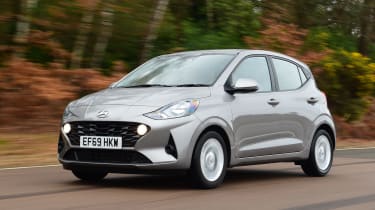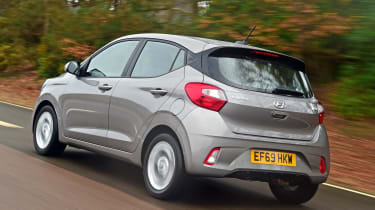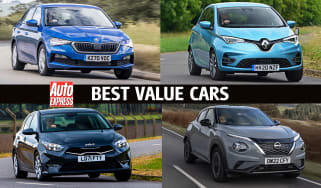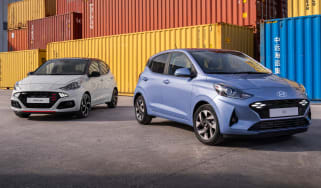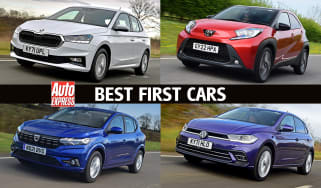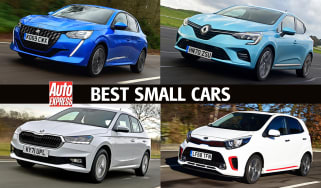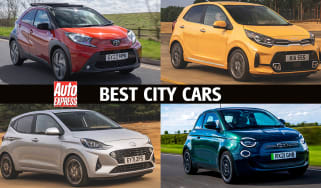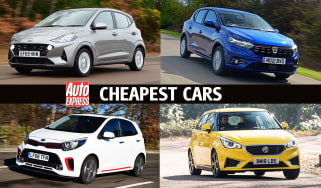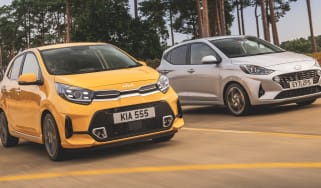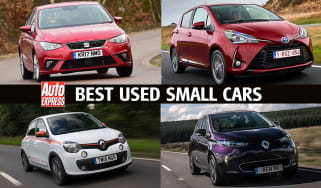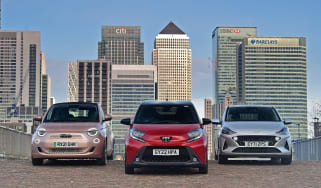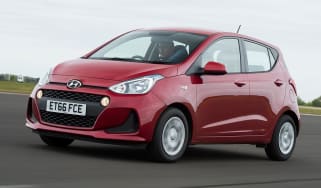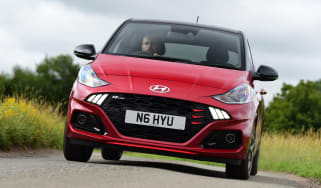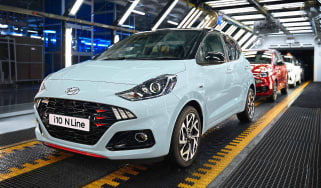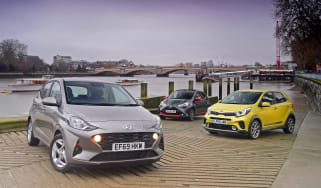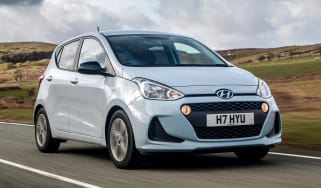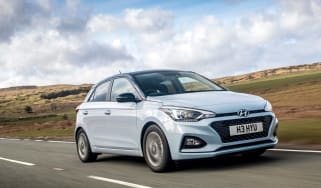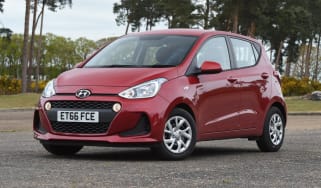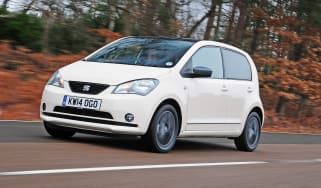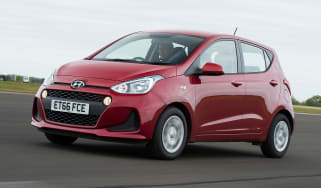Hyundai i10 review
The Hyundai i10 is a capable, comfortable city car, offering decent onboard tech and useful practicality, although it does come at a cost
The Hyundai i10 is a strong contender in a shrinking city car market. Improvements to on-board tech, more cabin space and a sleeker, sportier look will entice some, but the i10 still can’t compete with rivals on performance and running costs.
The i10 feels comfortable on the move and should fit seamlessly into daily life, although high prices and a drab interior will count against it - particularly with those style-conscious customers looking for a funky urban runabout.
About the Hyundai i10
Hyundai has decided to give the i10 a real push as a city car contender. Beneath the restyled body, this third-generation model sits on an all-new platform, which sees an increase in width and a slightly lowered stance.
It all makes for a sportier look, while the Korean manufacturer has also managed to conjure up a 40mm longer wheelbase, meaning more interior space. Updated on-board tech is also welcome and helps make the five-door i10 feel more up-to-date.
Although the i10’s city car competition has reduced in number (the Toyota Aygo, Citroen C1 and Peugeot 108 triplets are no longer available), it’s still vital that the i10 is able to prove itself against the alternatives. Affordability is key for city car customers, so models like the impressive Kia Picanto and petrol-engined Volkswagen up! will be in the thinking of many buyers, while there's the less expensive versions of larger superminis from the class above, which tend to trump city cars for size and sophistication.
The i10 range features three standard petrol engine options, with no hybrid or fully-electric versions available. A 1.0-litre, three-cylinder MPi unit with 66bhp is the entry point to i10 ownership, followed by a 1.2-litre four-cylinder engine, producing 83bhp. The top-of-the-range 1.0 T-GDi delivers 99bhp. All cars feature a five-speed manual gearbox, while the 66bhp and 83bhp variants also offer an automated manual transmission.
The trim level range no longer includes the entry SE, which leaves the SE Connect and Premium versions covering the core of the range, with the sporty N-Line trim only offered in combination with the 1.0 T-GDi engine. Standard kit includes Bluetooth, a DAB radio, a multi-function steering wheel and an 8.0-inch touch screen.
Ultimately, though, sales success will come down to price and, with an entry point of around £15,000, the i10 arguably doesn’t represent the value it once did, leading buyers to maybe consider that there's better value to be found in the supermini class with the likes of the Renault Clio, Ford Fiesta and cut-price Dacia Sandero.
Used and nearly new
The original i10 of 2008 was a big success for Hyundai – especially in the UK, which accounted for more than a third of the 110,000 sales the city car notched up in Europe in the six years it was available. Designed to replace the brand’s underwhelming Amica and Getz, the i10 served-up a surprising amount of sophistication for such a small car, not to mention loads of standard kit. It was also backed by Hyundai’s five-year and unlimited-mileage warranty.
The second-generation car had big boots to fill when it arrived in 2014, but impressed immediately with its handsome looks and grown-up driving dynamics. The Mk3 that arrived in 2019 built on these strengths with even sharper style, a roomier interior and all the latest tech.
Hyundai i10 history

Hyundai i10 Mk3: 2019 to present
One of our favourite small cars, the third-generation i10 melds sophisticated style with cutting-edge tech and infotainment. It’s also good to drive, with composed handling and the sort of refinement you’d expect from a bigger car. Yet its smooth, small capacity engines also blend eager performance with penny-pinching running costs.
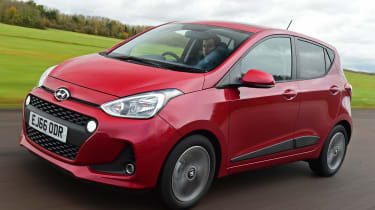
Hyundai i10 Mk2: 2014-2019
Faced with brilliant rivals such as the VW up!, Hyundai's engineers aimed to deliver a small car that was even more grown-up to drive and sit in. Overall, they hit the bullseye, because while the i10 wasn’t as much fun to drive as some, it set the standard for comfort, refinement and practicality. You can read our full Hyundai Mk2 used buyer’s guide here.
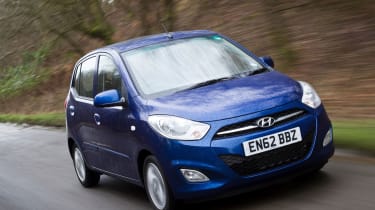
Hyundai i10 Mk1: 2008-2014
Replacing the lacklustre Getz, the i10 was the city car that proved Hyundai meant business. Slightly bland looks aside, it was easy to drive, surprisingly spacious and great value for money. In top-of-the-range form it even offered enough kit to make an executive saloon driver green with envy. Was a big hit following the UK’s 2009 Scrappage Scheme, with thousands of drivers trading up to the Hyundai from their old bangers.
For an alternative review of the Hyundai i10, visit our sister site carbuyer.co.uk...

